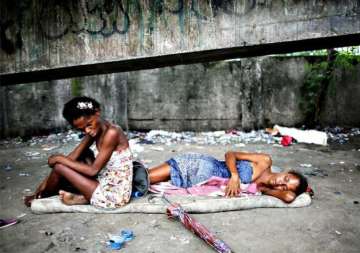The markets are open around-the-clock, pulling in young mothers, truck drivers, the homeless, anyone looking to get high.
They are known as "cracolandia," or crackland, the open-air bazaars found in some Rio de Janeiro slums where crack cocaine users can buy rocks of the drug and smoke it in plain sight, day or night.
Brazil, according to some recent studies, has become the world's top consumer of crack cocaine, a cheap and highly addictive derivative of the coca plant grown in neighboring countries. An estimated 1 million crack users have become a frightening blight for the country, deeply troubling to government officials whose programs have done little to halt the drug's spread.
Individually, the epidemic is comprised of people from all walks of life, some of whom once held jobs, some with loving families, who harbored dreams of a better existence, all lost to their addictions.
A makeshift portrait studio — a scavenged chair set in front of a white backdrop, illuminated by two small lights — draws crack users from their dark, nightmarish surroundings. Some users open up and tell their stories, while others reveal it only through their eyes.
Sancler Rodrigues borrowed a soccer jersey from a friend before posing. "I didn't think my old black shirt would look good in your photo," the 32-year-old says.
The portrait-seekers include a woman pregnant with her third child.
Another woman smiles while holding the stuffed dog belonging to her infant son who was born prematurely and is hospitalized. Daniela Pinto, her thin arms jutting from her red dress, wishes to be freed from her crack addiction.
Carla Chris, 35, holds onto optimism. "Smile because life is beautiful," she says.
Henrique Felix Santos, 41, grows philosophical when asked for his thoughts while posing in crackland.
"The expression of each human being is consistent with reality," he says.
